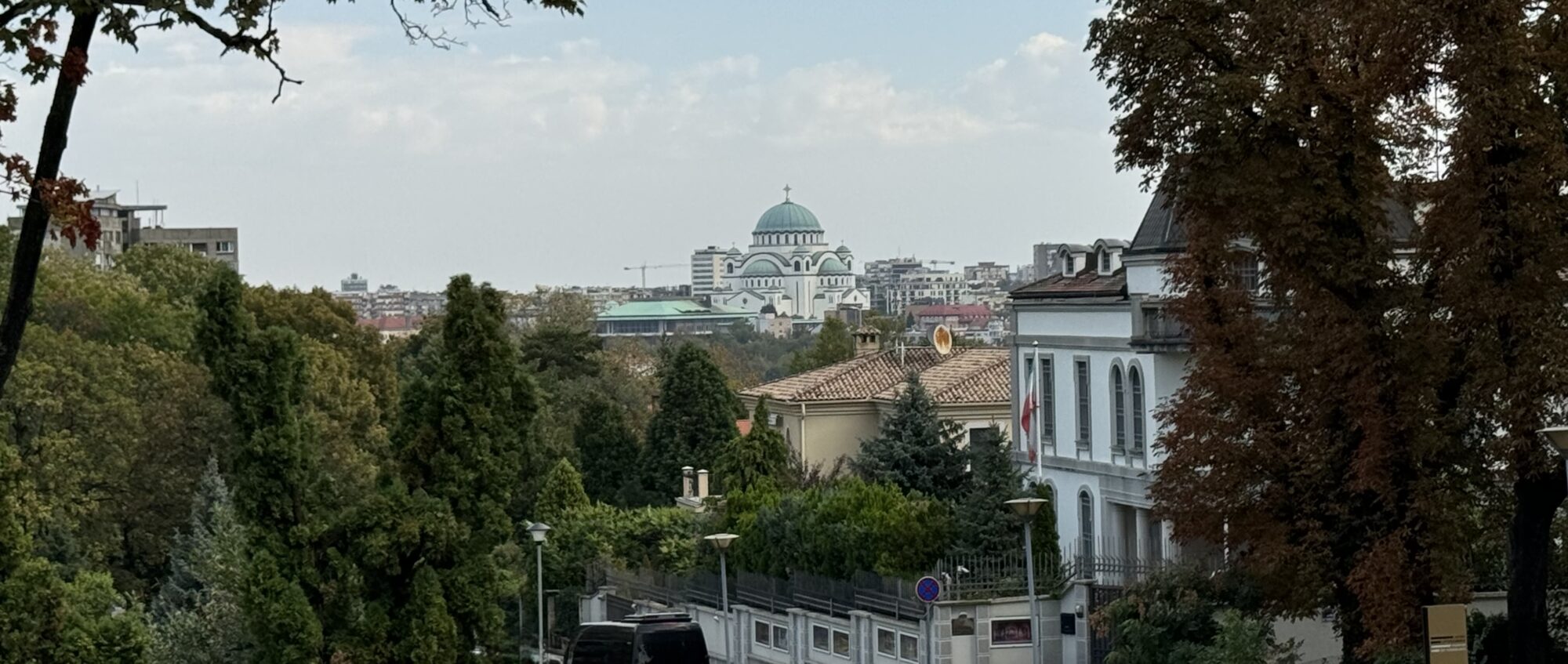Belgrade, the capital of Serbia, is a city with a truly complex history and a dynamic present. Home to about 1.2 million people, it’s one of the largest cities in the Balkans. Its story stretches back more than two thousand years, shaped by empires, conflicts, and holds a unique position at the crossroads of East and West. It has been fascinating to learn about it all!
Old and New Belgrade — Two Sides of the City
Belgrade feels like two cities in one to us. The Old Town area, often called Stari Grad, offers narrow streets, historic buildings, and a glimpse into its layered past. The architecture here reflects a mix of styles—Austro-Hungarian influences, Ottoman touches, Art Nouveau, and socialist-era buildings. You’ll find churches with ornate facades, lively promenades, and plenty of spots that invite you to sit and watch daily life unfold.
Just a short ride from the old city, New Belgrade (Novi Beograd) feels different—more modern, with wide boulevards, newer apartment blocks, and large commercial areas. It’s a reminder that Belgrade is growing and changing, though it retains a distinctly Balkan character in its feel and appearance.


A City Still Marked by History
Walking through Belgrade, you can’t ignore its not-so-distant history. The city carries traces of its communist past, with many security details still visible in the form of police presence and checkpoints. It gives the city a serious edge, a reminder of years marked by conflict and political tension. On several occasions, we noticed heavy security and even police barricades, especially near government buildings and during public events.
One such moment was near the famous Hotel Mockba (Moscow), which was a bit unsettling. This historic landmark, built over a century ago, is more than just a hotel — it’s a symbol of Belgrade’s rich history and stunning Art Nouveau architecture. Known not only for its elegant facade but also for the iconic Hotel Mockba cake (which we had planned to order), it’s a spot that draws both locals and travelers for the cultural history. We planned to get a closer look, but hundreds of police officers (due to a protest in the area) made it clear we shouldn’t linger. The tension was palpable, and we quickly moved on, keeping safe while still curious about the scene — and about the stories this legendary hotel has to tell. It will be on our list for ‘next time’.


Strolling Around the University of Belgrade Area
We explored the area around the University of Belgrade. The college buildings near us were covered with plywood and looked a bit dismal, though there was still some youthful energy from the students and locals around.
Not far from there, we found a street decorated with a canopy of red umbrellas overhead — a popular spot for photos and a bright splash of color in the area. Nearby, the Rajiceva Shopping Center offered a modern feel with its bright storefronts and cafes.
We stopped at Via Del Gusto, a café along the main promenade, enjoying coffee and a pastry while watching the world go by. It was mid-afternoon for us, but early morning back home, so it was a good moment to call family and share a bit of the experience. It was a nice break watching the local scene around us.

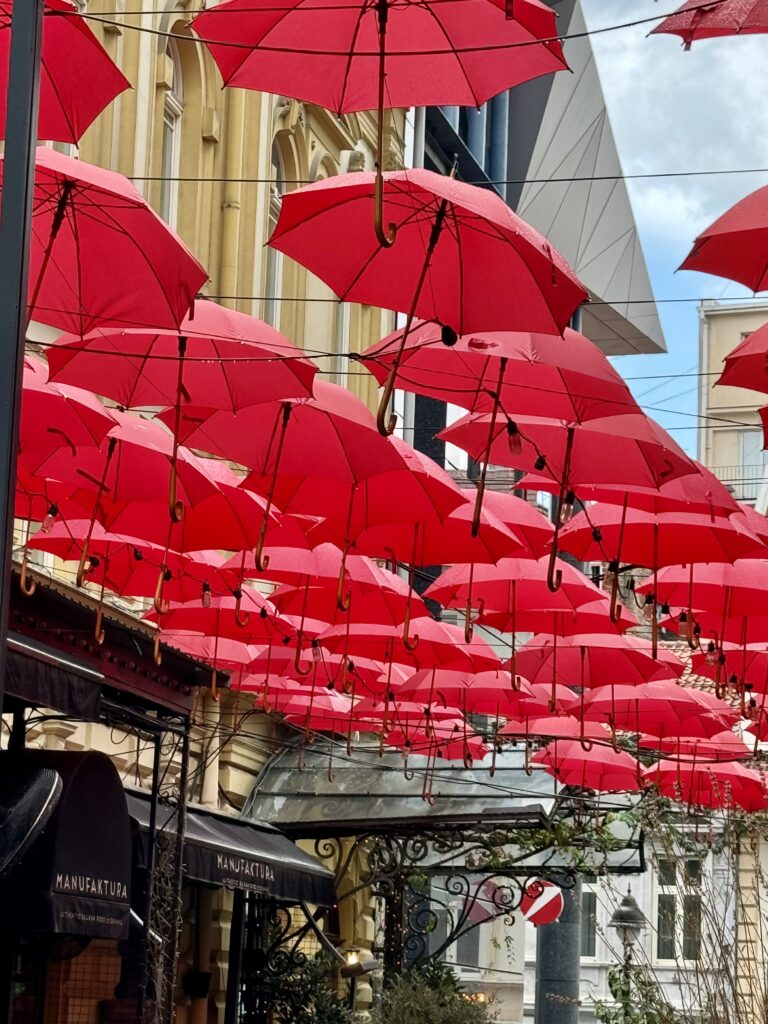
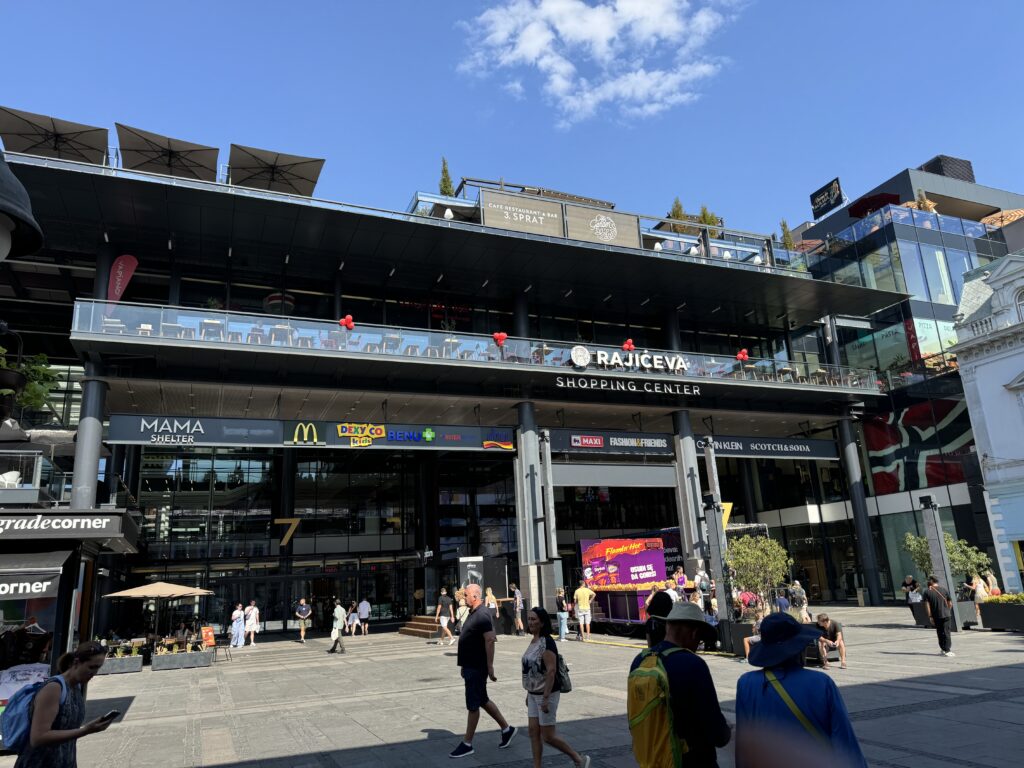

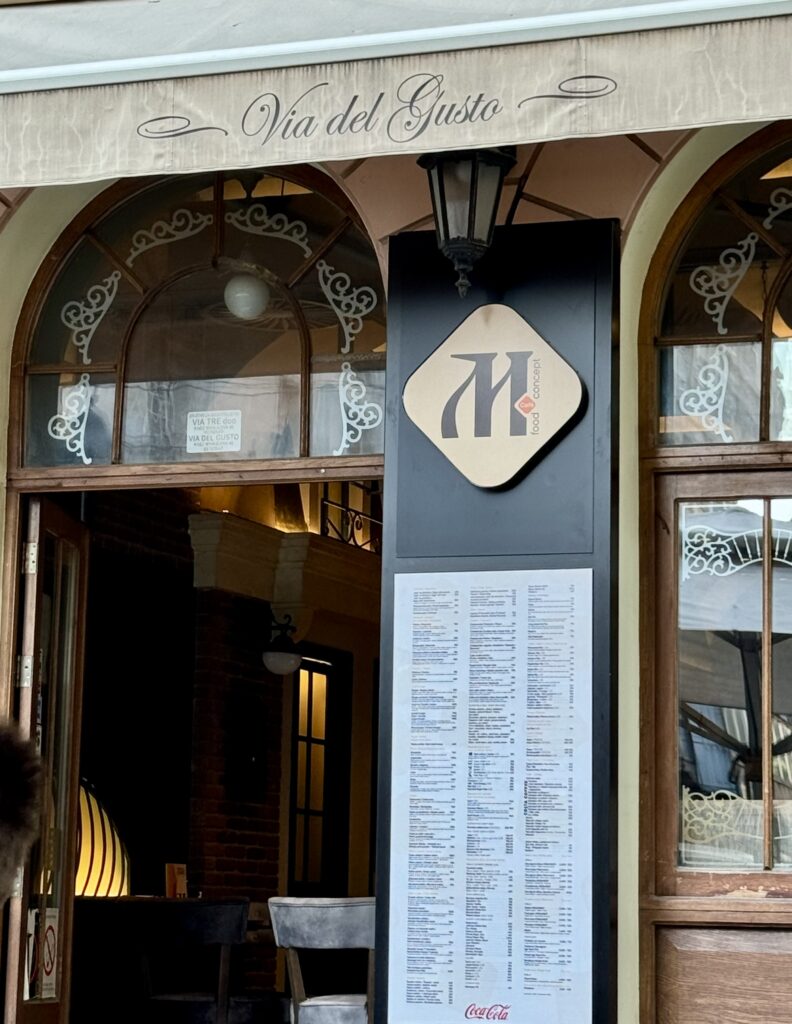
Churches and Traditions
Belgrade is dotted with churches, many of them beautiful and rich in history. At the Cathedral Church of St. Michael the Archangel, we had the chance to witness a baptism—a young boy being welcomed into the Serbian Orthodox faith. Inside, the church was filled with vibrant icons, each carefully painted and very detailed, arranged prominently on the iconostasis that separates the sanctuary from the main space. Nearby, rich red and gold curtains framed a side door, adding a heavy, regal touch to the interior.
The church’s interior reflects centuries of tradition, with elegant chandeliers, polished woodwork, and intricate frescoes. The use of candles and incense plays an important role in the Orthodox liturgy. Overall, it was a moving glimpse into a faith that treasures its history and artistic heritage.


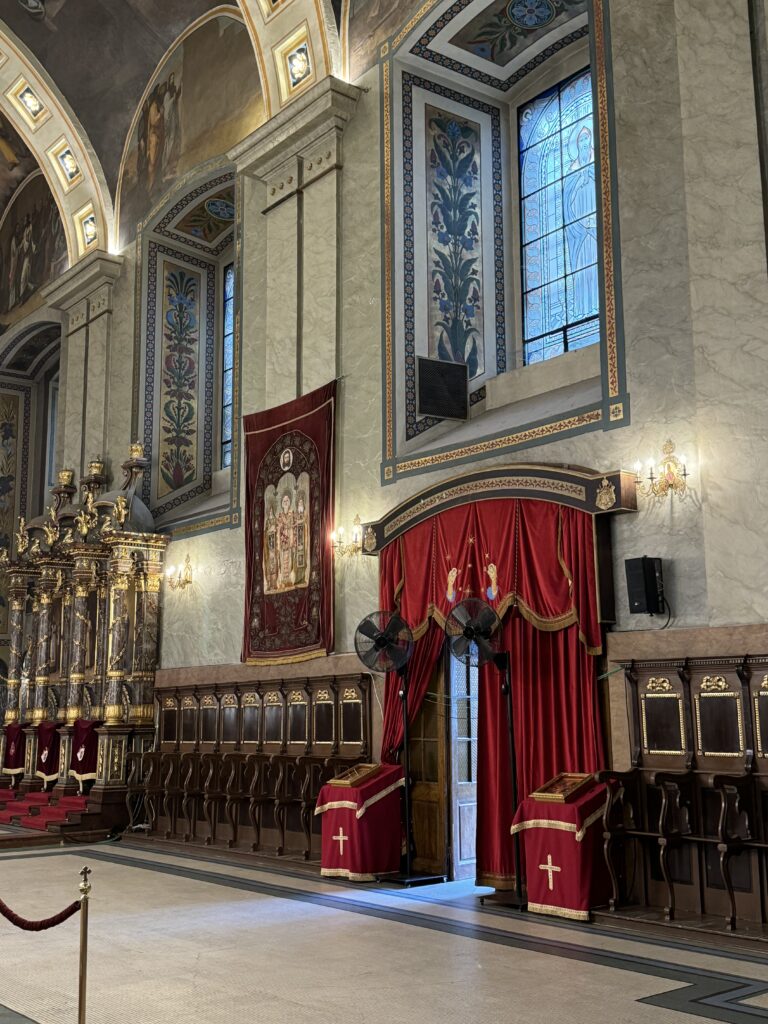
The Museum of Jugoslavija & House of Flowers — A Deep Dive Into Tito’s Legacy
One of the most memorable parts of our visit was the Museum of Jugoslavija and the adjacent House of Flowers, the memorial site of Josip Broz Tito. Tito was the leader who kept Yugoslavia together for decades, and his legacy remains deeply complex.
The House of Flowers is a peaceful, carefully maintained place with gardens, a collection of memorabilia, and Tito’s mausoleum. Walking through the grounds, you get a sense of the respect and affection many still feel for him, despite his authoritarian rule. It’s remarkable how many people across generations still continue to visit, leave flowers, and reflect on his role in history.

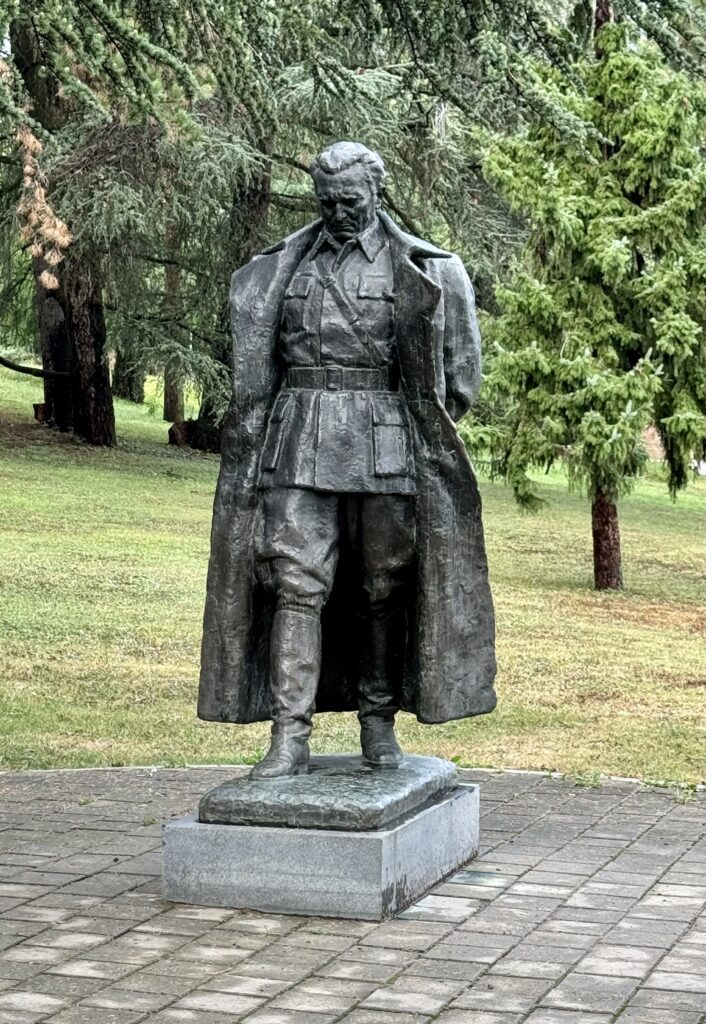

Inside the museum, exhibits trace Tito’s life—from his early years, his rise through the communist party, to his leadership and diplomacy during the Cold War. It’s clear that for many Serbians, Tito symbolizes a period of relative stability and unity, even as others see him as a dictator. The museum doesn’t shy away from that duality; instead, it presents a thorough, nuanced view of the man and his times.
We spent several hours there, drawn in by the collection and the story it tells. For anyone interested in the history of the Balkans, this is a must-visit spot. It offers insight into the region’s complexities and why Tito’s memory still matters. I can say that it honestly surprised us to see the love and care shown by his people during this time.
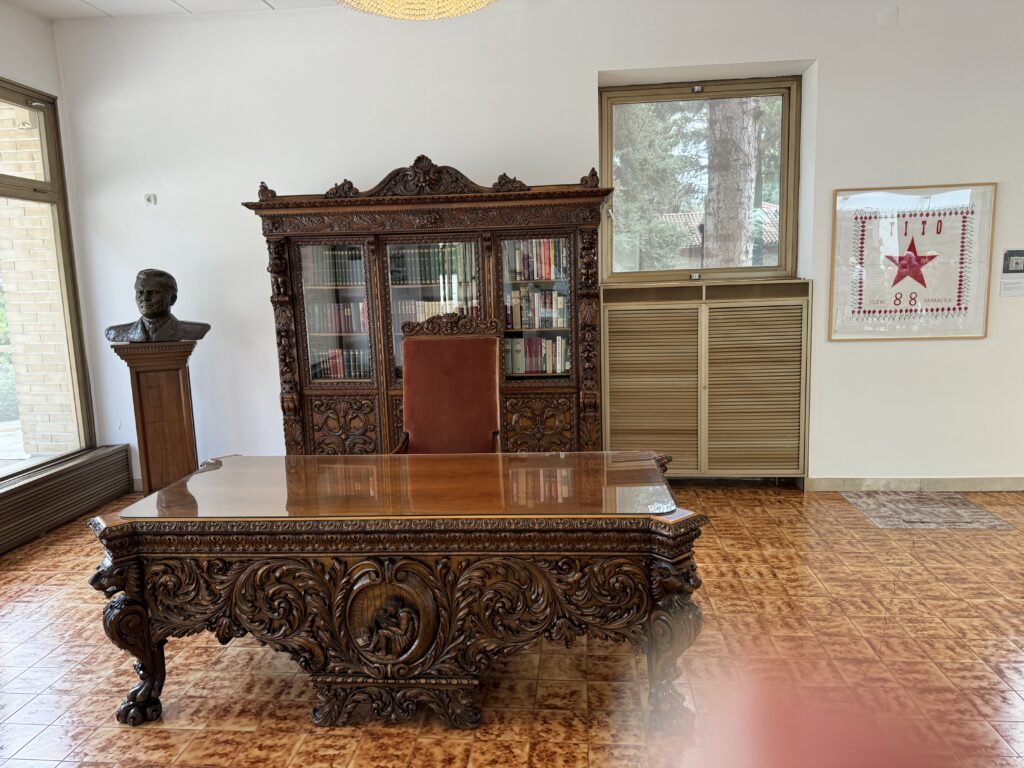


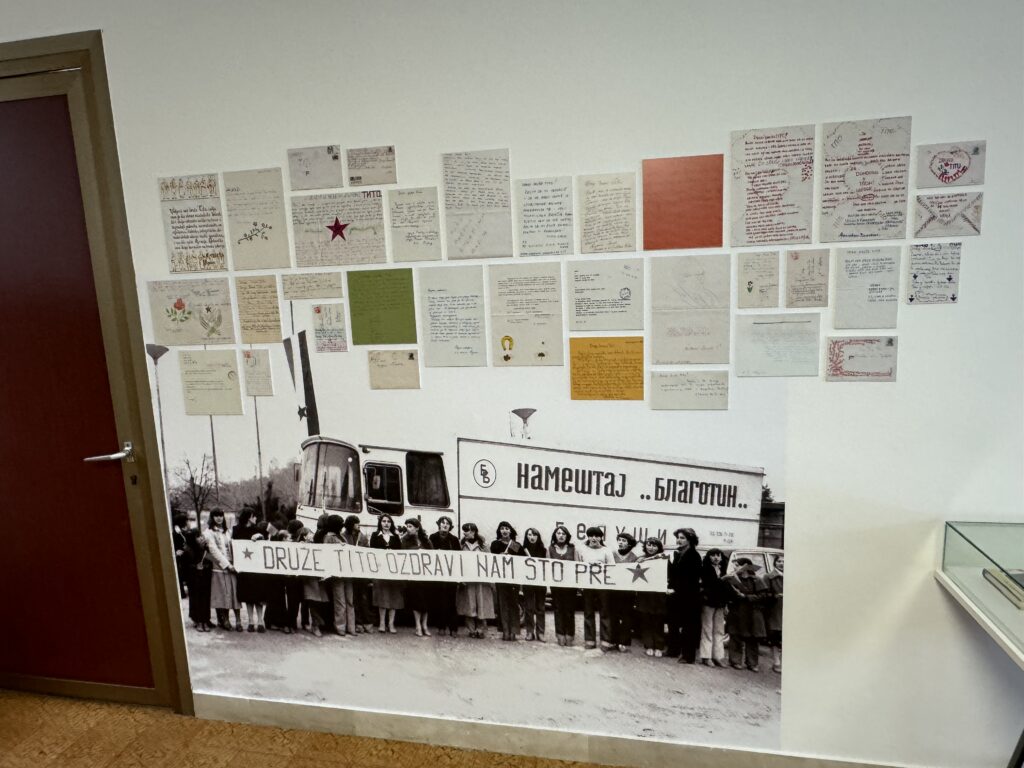
Old Belgrade, Parks, Chestnuts, and Local Life
We enjoyed a stroll through a lovely park in Old Town filled with families. One interesting local tradition is to collect chestnuts in the park during autumn and keep them in your pocket or purse throughout winter. This is believed to help prevent colds and respiratory problems.
Of course, we gathered some chestnuts for ourselves and to take home for family, hoping it will keep the doctor away. A simple tradition, but one that speaks to how locals blend nature and folklore into daily life. We left with our pockets full of these ‘medicinal’ nuts!
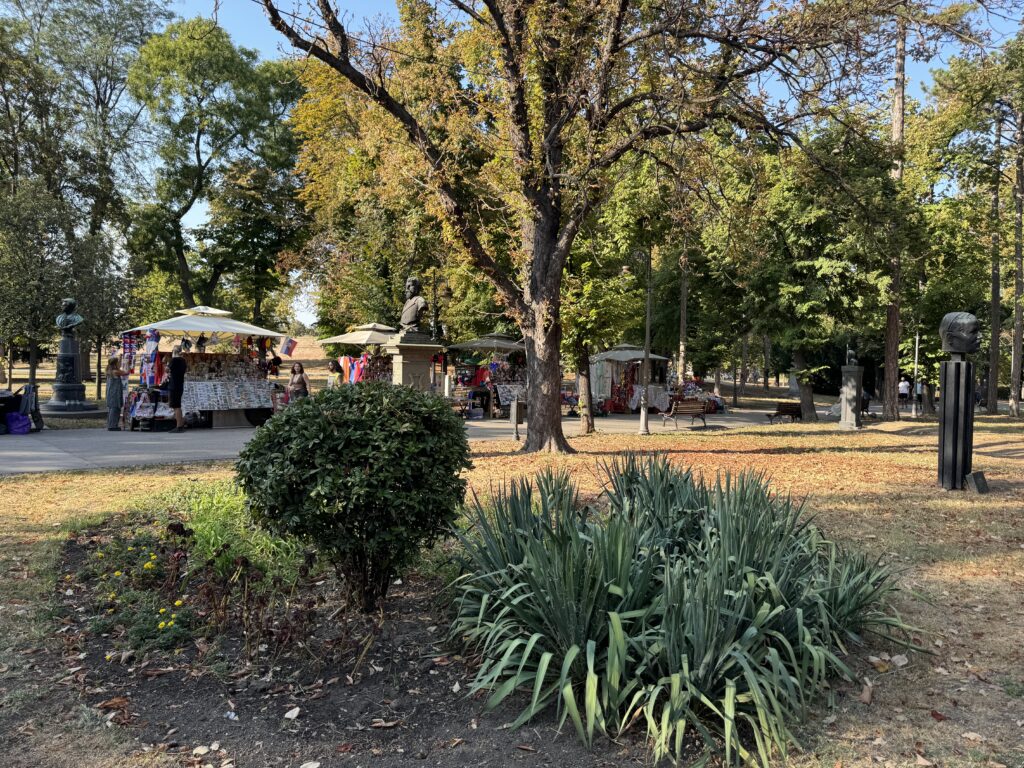

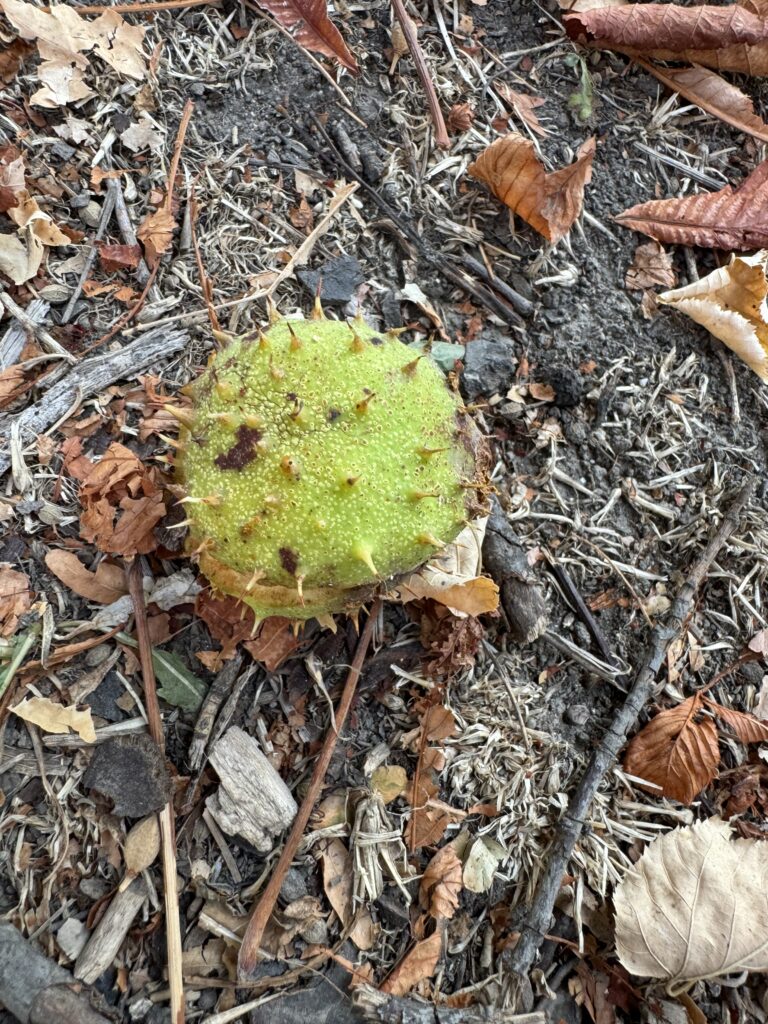
Signs of Unresolved Conflict
On the promenade, we noticed a large sign declaring, “THE ONLY GENOCIDE IN THE BALKANS WAS AGAINST THE SERBS.” It was a blunt reminder of the deep and ongoing tensions between Serbia and neighboring countries that were once part of Yugoslavia. The region’s history of conflict still shapes attitudes and politics today.

New Belgrade — Modern, But Distinctly Balkan
We spent some time in New Belgrade as well. It felt like many big cities with its commercial centers, wide streets, and modern buildings. Yet, it still carries a Balkan vibe—not fully westernized, with a blend of old habits and new ambitions. It’s less polished than Western European cities but offers its own brand of energy and life.
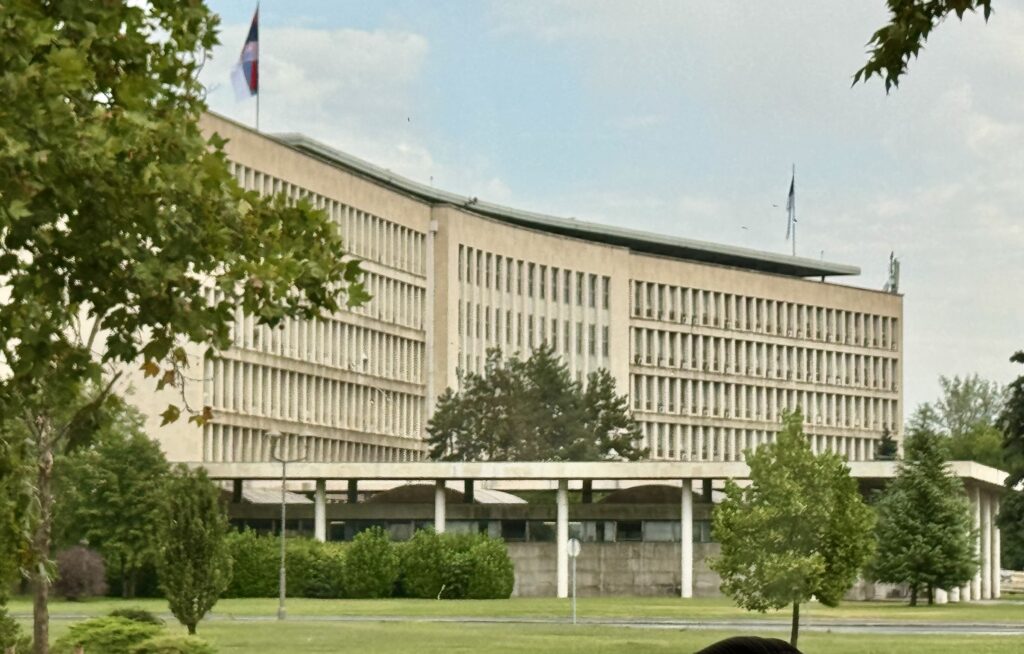
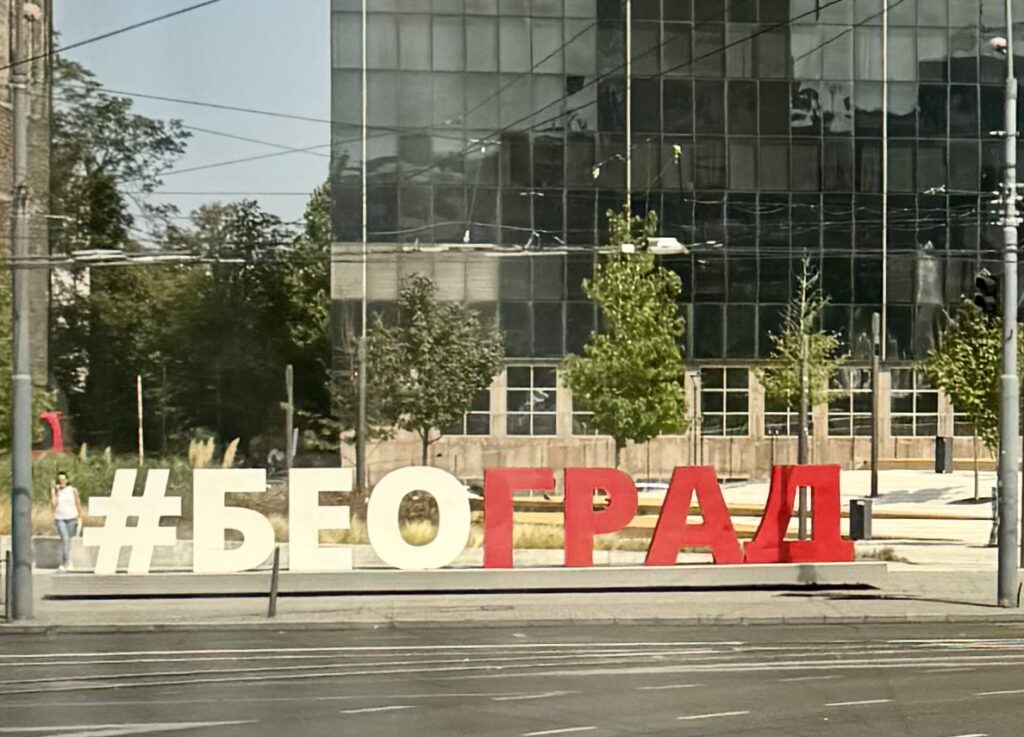

Final Thoughts
Belgrade is a city of contrasts—old and new, calm and tense, historic and modern. The heavy police presence and reminders of conflict give it a serious edge, but beneath that is a city that pulses with everyday life and tradition.
We left with an impression of a place that holds onto its history while trying to move forward. The museums, churches, parks, and bustling streets all tell a story of resilience and change. It’s a city that wears its history openly, blending the scars of communism with the hope of the future.
If you’re curious about the Balkans and want a city that blends history, culture, and a raw edge, Belgrade should be on your list.
See also: Budapest Revisited:A Wonderful Beginning
Vukovar, Croatia: A Quiet & Powerful Strength
Discovering Novi Sad: Serbia’s Unexpected Charm
Belgrade, Serbia – A City of Complex History (This Post)
Golubac Fortress and Lepenski Vir – A Day in Northern Serbia
The Iron Gate Gorge: From Decebalus to Danube Locks
Viden, Bulgaria: Roses, History and Symphony
Belogradchik Fortress: Bulgaria’s Hidden Gem in the Balkan Mountains

